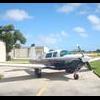Wild Ride
-
Members Online
- Lax291
- INA201
- Mooney in Oz
- Dwb62
- PeytonM
- Wingman Woody
- Jasonc79
- N201MKTurbo
- TangoTango
- Hank
- NickM20F
- Rmnpilot
- IvanP
- hubcap
- LANCECASPER
- donkaye, MCFI
- gwav8or
- Igor_U
- Nippernaper
- 00-Negative
- hammdo
- SKI
- Yetti
- Steve Hughes
- neilpilot
- Jason Hardy
- 201Mooniac
- Aaviationist
- Ragsf15e
- 1980Mooney
- Ed de C.
- Fix
- Ventus4
- Michael Brown


Recommended Posts